QuestionHi, I have aten gallon tank set up with tropical fish, I have no heater but they seem to prosper. I have four guppies, a male betta & two tiny feeder goldfish in it. I was wondering what else I can put in there? I had tryed two little gold/black mystery snails but they died. I'd like to put a trio of the tiny dime sized dwarf frogs in there & possibly some mollies or sword tails would these work? what types of mollie or swords are better I like the sailfin mollies best. I may try two more snails in the future to help clean the tank of extra food as such wuld these work with the new things I plan to get? also do you know how long any of the above live? how long do bettas normaly live? please get back to me when you can, thanks.
AnswerHi;
With the goldfish in there the tank really is maxed out. They get very large and will take over the tank. They may even eat your other fish as they grow. (yikes!) They also prefer lower temperatures than your other fish do. Your best bet is to take them back to the fish store and get some frogs or regular mollies instead. I wouldn't get both or the tank will be overcrowded. Swords and sailfin mollies get about 4 inches long so they really need to be in a 20 gallon or larger. Wjatever kinds of fish or frogs you get, be sure to make weekly 25% water changes. All fish need it to stay healthy. Fish will "survive" with less maintenance, but they are very unhappy. We like happy fish!
Frogs need live or frozen foods to survive. Once they get established in your tank they can sometimes be coaxed into eating dried foods, but not usually and they often get too thin on them. If your fish store insists that their frogs do eat dried, insist that they feed them in front of you to prove it. If they don't eat, buy frozen brine shrimp and blood worms. It's good to feed more than one kind so they variety. The fish like these foods too. Frogs are slow eaters so you will have to put a little jar on it's side at the bottom of the tank with the food in it so they get some before the fish eat it all. They just can't see very well so they slowly "walk" along the bottom with their little faces down to smell where the food is. Also be sure every single opening is sealed on the cover of the tank. They will escape but can't actually live out of the water. They are looking for another "pond" to find more of their favorite foods (bugs), but will dry up before that happens. (Poor guys!)
You really should have a heater in there to keep the temperature consistent. If it is summer right now where you live in the winter your fish will get sick. Unless you keep the room temperature at 75 to 80 twenty four hours a day. It's just safer for your fish to have a heater so you know they will be okay.
Is the tank fairly new or recently set up less than 8 weeks ago? You will need to know about new tank syndrome. Just in case, here is my article on new tanks to help you through;
**********
New Tank Syndrome or Break-in Period
So you have a new tank and you filled it up, put the filter together, mounted the heater into place and turned on the lights. You have all the plants and decorations where you want them....
You are ready for fish.
But, your filter is not ready for a full tank of fish yet.
The filter is running and moving the water and cleaning out crud, right? Of course!
But a very important part of your filter is the part you can't see. An aquarium filter removes the larger visible stuff, but it also must remove the dissolved fish waste that turns into ammonia in the water. To do this, special bacteria must grow in the filter system and on the particles of gravel in the bottom of your tank. This process occurs even on a limited scale in little fish bowls that have no filter in them.
This is "New-Tank Syndrome" or the "Break-in Period". The entire process takes 6 to 8 weeks to complete because these "nitrifying" bacteria grow quite slowly.
Start off with only one or two hardy fish (no more than 2 total inches of fish) for every ten gallons of water and don't add more until the 6 to 8 weeks has gone by. Hard to be patient, but it is worth it to keep your fish alive and healthy. As a matter of fact, the bacteria cannot develop without fish in the tank. You can let that tank sit forever without fish in it, but as soon as the first fish goes in the process begins. Avoid changing the filter pads during break-in. This removes the bacterial colonies that are essential to a balanced aquarium. You can rinse the filter pad out in a container of aquarium water. This will preserve most of the bacteria colonies while still allowing your filter to flow freely. Even using bacteria additives and water conditioners when you first set up the tank will not make a tank begin the cycle by itself. If there are no fish to provide food (fish waste) for the bacteria, the beneficial bacteria cultures will die and you will have to start the colonies all over again once fish are added to the tank. Once the tank has completed the initial cycle, you can change the filter pads every 4 weeks or so. But for now, just rinse them.
Feed your new fish VERY lightly. Any excess food will cause additional waste your system cannot afford to have right now. If you see food floating around or lying on the plants and gravel after five minutes, too much food is going into the tank. Cut back a little each time you feed until it is ALL gone 5 minutes after you feed them. Feed them once a day.
During this "break-in period" your tank will become cloudy and milky looking. You may have to tolerate this for the entire break-in period but it is only temporary. Changing 25% of the water three times a week until the break-in period is over helps a great deal. Changing water reduces the ammonia and nitrites that rise while the bacteria continues to multiply. If ammonia and/or nitrites become too high, your fish will become stressed and possibly die. Use a good water conditioner when you replace the water and make sure it is the right temperature to avoid shocking your fish.
When the break-in is over after 6 to 8 weeks and there are no nitrites or ammonia present in the water you can slowly add more fish. Add one or two every week until you reach the desired population. This allows the bacteria to adjust to the new population every time before adding more. Monitor the nitrites and ammonia to be sure they don't come up. If they do, make a 25% water change and check them again. Don't add the next fish until the levels are down again.
The safe maximum population for any size tank is one inch of adult fish for every gallon of water in the tank. Do some research to be sure of the fish you are interested in. Even though they are small when you buy them, you have to base your population calculations on full-sized adult fish. Many hobbyists have up to two inches per gallon but this can be risky. If a water quality issue arises or a disease occurs it will spread fast and furious in an over-populated tank. In any case, 25% water changes every week to two weeks are absolutely essential for the health of your fish.
Following these guidelines will help you get your new tank on the right track.
**********
At Your Service;
Chris Robbins
Come on over and join us on the freshwater fish forum at About.com to get even more information too;
http://freshaquarium.about.com/od/questionsanswers/a/naavigateforum.htm

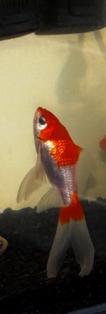 Vertical on the gravel
QuestionImage 2
Image 1
QUESTION: I dont
Vertical on the gravel
QuestionImage 2
Image 1
QUESTION: I dont
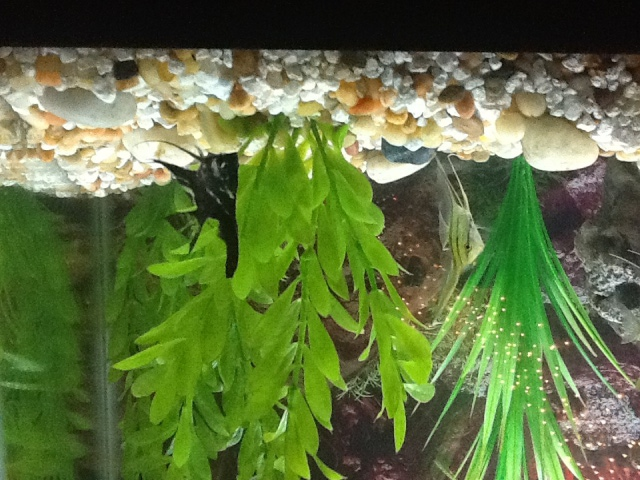 Angels ganging up on pleco
QuestionAngels
QUESTION: I have a 45 gallon tan
Angels ganging up on pleco
QuestionAngels
QUESTION: I have a 45 gallon tan
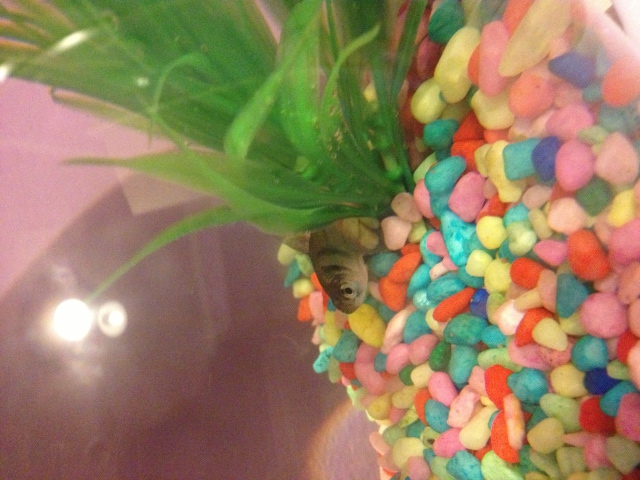 Black widow (tetra)
Question
Tetra
Hi there,
I am a very concerned f
Black widow (tetra)
Question
Tetra
Hi there,
I am a very concerned f
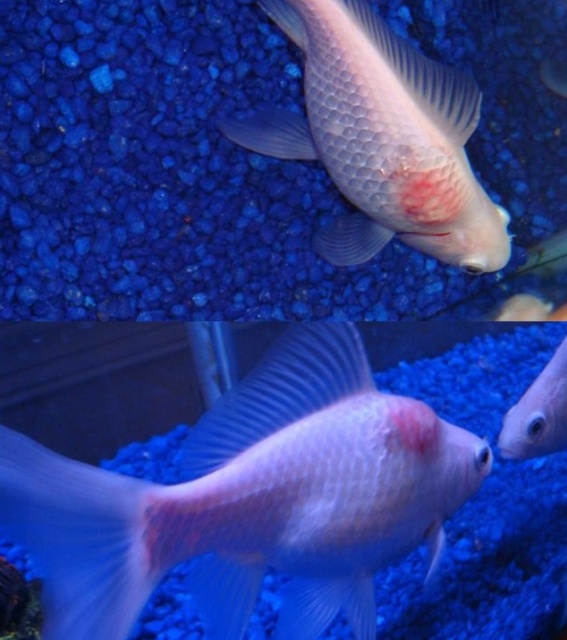 Goldfish with swollen bump near dorsan fin
Question
Goldfish with swollen
Jumbo (see attached pho
Goldfish with swollen bump near dorsan fin
Question
Goldfish with swollen
Jumbo (see attached pho
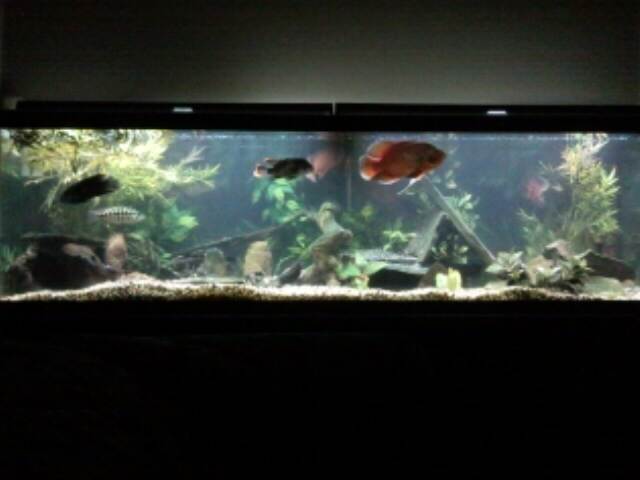 Another New-Age Cichlid Question
QuestionMy 125-gallon New Worl
QUESTION: Profess
Another New-Age Cichlid Question
QuestionMy 125-gallon New Worl
QUESTION: Profess